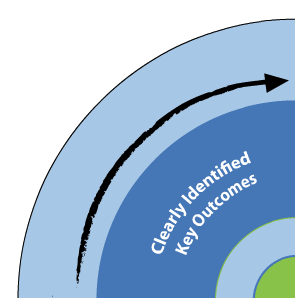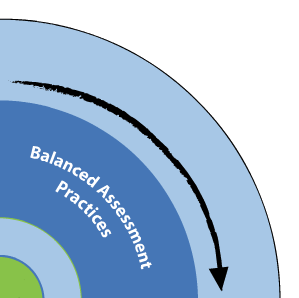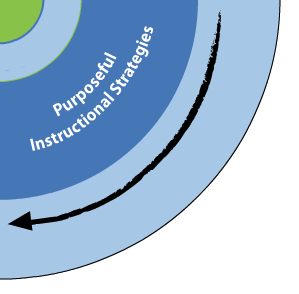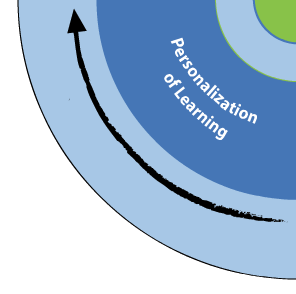Metacognitive Skills - Synthesizing
Synthesizing
Page Navigation
(Click to jump to section)
| Brief Explanation | Research | Clearly Identified Key Outcomes | Balanced Assessment Practices | Purposeful Instructional Strategies | Personalization of Learning |
Brief Explanation
- Definition: the combining of information from various sources. In this sense, synthesizing is creative. Readers must create a single understanding from a variety of sources. Being literate in the 21st century means being able to deal with multiple information sources and make sense of it all.
- The ability to take information and put it together to form something new.
Research
- “Synthesizing involves reflection across text.” (p.149, Duffy, 2003)
- “Synthesizing often results in a product. We usually synthesize because we are creating something new or producing a solution to a problem.” (p.149, Duffy, 2003)
- Readers need to bring together parts or elements of text to create a new understanding. (Fountas & Pinnell, 2001)
- “Synthesizing is the strategy that allows readers to change their thinking.” (Harvey & Goudvis, 2000)

Clearly Identified Key Outcomes
Use your programs of study for curriculum outcomes related to synthesizing.
Please refer to CESD’s Essential Outcomes work if you are using the previous Alberta Curriculum (Grade 7+).
Here is the New Alberta ELAL Curriculum, from the New Learn Alberta website, laid out like a scope and sequence.

Balanced Assessment Practices
- T-Charts that list predictions (before) and support (during) reading. After finishing a selection, a third column should be added where students can adjust their predictions. Evaluate students based on whether or not their prediction is logical rather than if it’s correct.
- Teacher-student discussions.
- Student-student conversations.
- Journaling

Purposeful Instructional Strategies
PRE
- KWL charts
- Graphic and semantic organizers
- Prediction
- Conversations (teacher – student & student – student)
- Think-Aloud
- Deepen background understanding
- Analogies
- Explain synthesizing as: “putting the pieces together in a new way”
- Verb list for synthesizing: create, imagine, extend, compose, predict, hypothesize, compare/contrast, explain, invent, infer, improve, design, suppose that, produce, connect, outline, sort, synthesize, and categorize
DURING
- Answering questions about the text while reading – using Bloom’s Taxonomy
- Generating questions while reading – using Bloom’s Taxonomy
- Story maps, retelling, story questioning as they read
- Stop and clarify – check for understanding as reading
- Reading with the intent of expanding personal understanding by integrating reading with personal knowledge
- Relate important ideas to each other
POST
- Summarizing learning in KWL chart
- Questions – Bloom’s Taxonomy
- Create summaries by consolidating short paragraphs or passages, into only the most important, main ideas.
- Summarize text by identifying main ideas and supporting details.
- Expanding personal understanding by reflecting on how the text can be integrated with personal knowledge
- What connections does this reading make for you?
- What are you thinking or wondering about now?
- How have our opinions and ideas, feeling and thoughts about the text changed?
RESOURCES TO SUPPORT OVERALL DEVELOPMENT
- Provide a description of important information to know and include specific strategies.
- reading.ecb.org




Personalization of Learning
- Have students relate information from text to their lives.
- Student questions: “What am I taking away with me?”, “What information is useful to me?” and “How does it fit, or not fit, with what I know?”